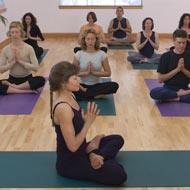Is it common to experience Heartburn after Exercise?
The severity of the heartburn depends on the kind of food that the person has consumed and the kind of exercises being performed. A lot of people experience acute heartburn after exercising. This is caused when a person exercised without waiting for the appropriate amount of time after consuming a heavy meal.
Acute heartburn is transient and its onset is very sudden. On the other hand, chronic heartburn occurs repeatedly and is difficult to treat. When heartburn occurs repeatedly every time you exercise, you need proper diagnosis and treatment. Causes of Heartburn after Exercise The stomach and esophagus are formed in such a manner that the stomach acids and enzymes in the stomach are prevented from entering into the esophagus and subsequently the mouth. However, when you are exercising, the lower sphincter relaxes and allows the gastric acid and stomach juices to enter into the esophagus. Exercises that involve sudden or jarring movements can especially trigger the movement of stomach acids and enzymes. Another common cause of heartburn is eating too much before exercising or exercising too soon after consuming a heavy meal. There are certain foods that are more likely to cause heartburn than others.
Heartburn is experienced as a burning pain, especially behind the breastbone. You may also experience flatulence and gas along with heartburn. You may feel slightly heavy and uneasy. Sometimes, when the heartburn is severe, it may seem as if you are experiencing a heart attack.
Diet to Prevent Heartburn after Exercise
Maintaining a good diet is very important in order to reduce heartburn. Since heartburn after exercise is almost always linked to the kind of food you eat and your meal habits, it is important to ensure that you consume good food.
It is also important to keep an interval of at least 1 to 2 hours between a meal and your exercise. Avoid eating certain kinds of foods before you begin your exercises. Aerated drinks, tomato based gravies and sauces, citrus juices, caffeinated drinks, chocolate, and alcohol are some of the foods that increase the likelihood of experiencing heartburn after exercising. It is also advisable not to overeat before you exercise. If you have an especially strenuous exercise schedule planned out, ensure that you only have a light meal before you start. Take care to keep yourself hydrated during your exercise.
Exercises that are More Likely to Cause Heartburn
There are certain types of exercises that may involve a lot of movement. Such exercises are more likely to push the digestive juices from the stomach into the esophagus. Even gentle exercises such as yoga may cause heartburn. Inverted poses and headstands are most likely to cause heartburn. High impact aerobics, power yoga and crunches involve sudden movements that promote regurgitation and acid reflux.
There are also certain other exercises such as walking, cycling and swimming which do not increase the likelihood of heartburn. Usually exercises which involve cardiovascular workouts are safer for those who experience chronic heartburn. These are also safer exercises for those who suffer from conditions such as GERD and Irritable Bowel Syndrome. If you change your diet and perform a regimented exercise schedule, you may see a lot of change in your heartburn. However, if you still continue to experience the symptoms, you should consult a doctor and get yourself tested for gastrointestinal problems that may be causing these symptoms.
References
- Heartburn Risk Factors, Knowledge, and Prevention Strategies; Susan A. Oliveria et al; Journal of Internal Medicine July 1999, Vol 159, No. 14
- http://well.blogs.nytimes.com/2010/07/26/when-exercise-causes-heartburn/
Read more articles from the Yoga Exercises Category.

 Find Pose
Find Pose

